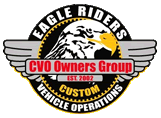Jerry, oh learned one...  WTF does emulate mean in this context? What is it emulating?
WTF does emulate mean in this context? What is it emulating?
Terry,
In this case emulate means "mimic", or act like. Gold Valve Emulators, for instance, are not a full cartridge replacement for the standard fork damper. They just mimic the action of a true cartridge system by separating the rebound and compression damping functions, and making the compression damping more linear relative to velocity. When you install these emulators, you drill out the compression damping holes in the damper rods, effectively eliminating any compression damping from the rods. The emulators sit on top of the rods and take over the compression damping chores, while the rods still handle rebound damping.
The problem with damper rods is that they do not react in a linear manner. With low speed suspension movements, there is very little damping since the oil flows easily through the fixed size holes. When the same fork hits a sharp edged bump, resulting in high speed suspension movement, you get extremely high damping since you are now trying to force oil through the same holes at a much higher speed. The actual damping force increases as a square of the velocity; ie. if you double the velocity, the damping force quadruples. This is why a damper rod system is mushy on small undulations and dives excessively when braking, but will then drive your arms into your shoulders on a sharp edged bump.
On the other hand, a cartridge system uses a stack of thin spring steel washers to control oil flow through the cartridge. At low velocity, the shims move very little so you have increased damping compared to the damper rod system. At high velocities, the shims move more and thus allow oil to flow more freely than the damper rod system, resulting in a more linear relationship between velocity and damping force. A true cartridge system has two cartridges, one for compression damping and one for rebound.
Hopefully this didn't muddy the waters even more.
Jerry
 Author
Topic: Traction Dynamics? (Read 13664 times)
Author
Topic: Traction Dynamics? (Read 13664 times)

